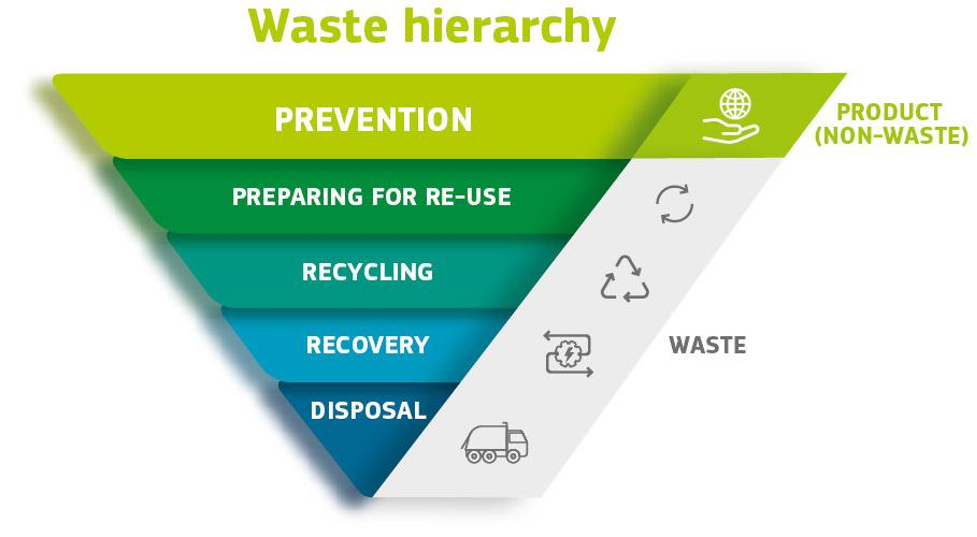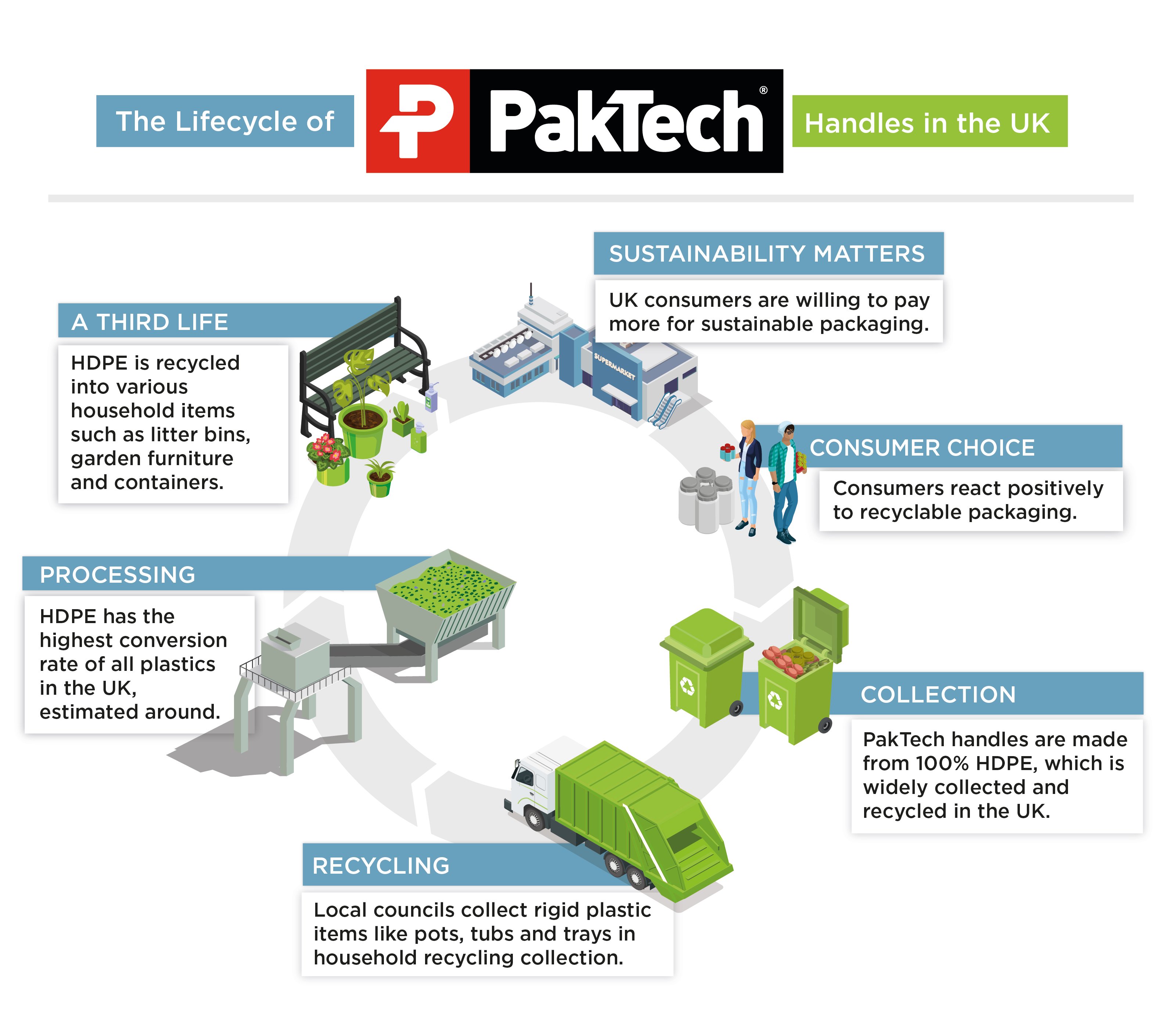Today, governments, businesses and consumers look for ways to optimise waste management. Among different solutions, the waste hierarchy concept has become an essential tool to determine priorities for action to reduce and manage waste sustainably. Yet, this concept remains unknown to many.
Not only is the waste hierarchy integrated into the policies and regulations across the UK and EU, an understanding of this evaluation tool by all economic actors is key to creating a waste-free environment. At PakTech, we are aligned with the life cycle thinking of the waste hierarchy, making it the most sustainable solution in the premium packaging market for FMCG businesses who wish to enable the transition towards a circular, resource-efficient, and waste-free future.
Here, we explore what the waste hierarchy is, how it is adopted into the UK and EU legal landscapes and how businesses can make the most environmentally responsible choices when it comes to waste.
What is the Waste Hierarchy?
In a nutshell, the waste hierarchy provides a clear framework for all economic actors including businesses and consumers to prioritise the most sustainable waste management practices.
The hierarchy is legally enforced across the UK and EU through a variety of domestic policies that implements the EU Waste Framework Directive that sets the waste hierarchy as the guiding concept for all domestic policies and regulations that concern waste management and resource efficiency. Further, as defined by the directive, national governments are also expected to implement measures to achieve the “preparation for re-use and recycling of municipal waste to a minimum of 55%, 60% and 65% by weight by 2025, 2030 and 2035 respectively,” making reusability and recyclability essential attributes. The recently launched Irish Climate Action Plan 2021 that outlines as one of its key actions to ensure all plastic packaging is reusable and recyclable by 2030 is a clear example of how governments within the EU are choosing to incorporate the waste hierarchy principles.
For both environmental and regulatory reasons, it is crucial that the waste hierarchy is understood by all commercial actors. The model outlines five waste management options for businesses to prioritise (in order of preference): prevention, reuse, recycle, recovery, and disposal.

Image: “EU Waste Hierarchy.” Waste Framework Directive, European Commission, https://ec.europa.eu/environment/topics/waste-and-recycling/waste-framework-directive_hr.
Why is the Waste Hierarchy Important?
The waste hierarchy provides guidance to all economic actors, whether they are consumers or businesses, to make the most sustainable choices by opting to use less materials in design and manufacturing, elongate a product’s life cycle by allowing for reuse, or turn excess into other valuable products. By providing a hierarchy of available waste management options and giving clear preference to the most sustainable choices, commercial actors can use this evaluation tool to improve the life cycle of their products and alleviate pressure on the environment. Further, the waste hierarchy not only enables our economy to become more resource-efficient and less polluting, but also encourages innovation worth investing in.
PakTech: Optimising Our Products for a Waste-Free and Toxic-Free Future
As consumers become more conscious of the environmental impact of their purchasing decisions, businesses must be up to the task to find better and more sustainable alternatives to optimise waste management. One of the easiest ways to improve a business’s environmental footprint is by using sustainable packaging solutions like PakTech handles.
PakTech packaging solutions wholly embody the priorities of the waste hierarchy through its minimalist but mighty design. They are minimalist in form to prevent the use of unnecessary material, durable and heat- and water-resistant to reduce the creation of waste and 100% recycled, reusable and recyclable to be perfectly aligned with the circular economy and keep waste out of oceans and landfill.

PakTech has a proven record of making design improvements to prevent the creation of waste - we have reduced the weight of our most popular handles, 6Pak and QuadPak, 2,5% and 7,4%, respectively. In addition, the material we use, 100% recycled HDPE, is safe and toxic-free material, containing no phthalates or other harmful chemicals, to enable a toxic-free circular economy.
At PakTech, we understand the importance of the waste hierarchy. We also want to help others to have a better understanding of this concept to allow other businesses to make the most well-informed and most sustainable choices when choosing their packaging solution.
